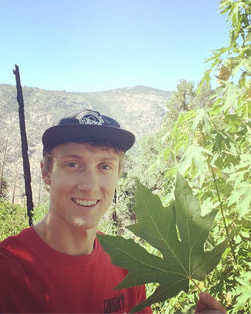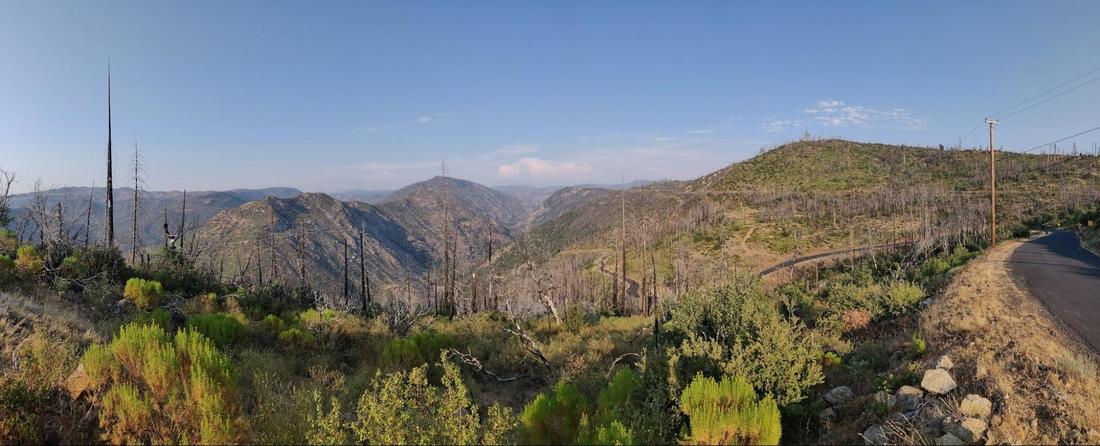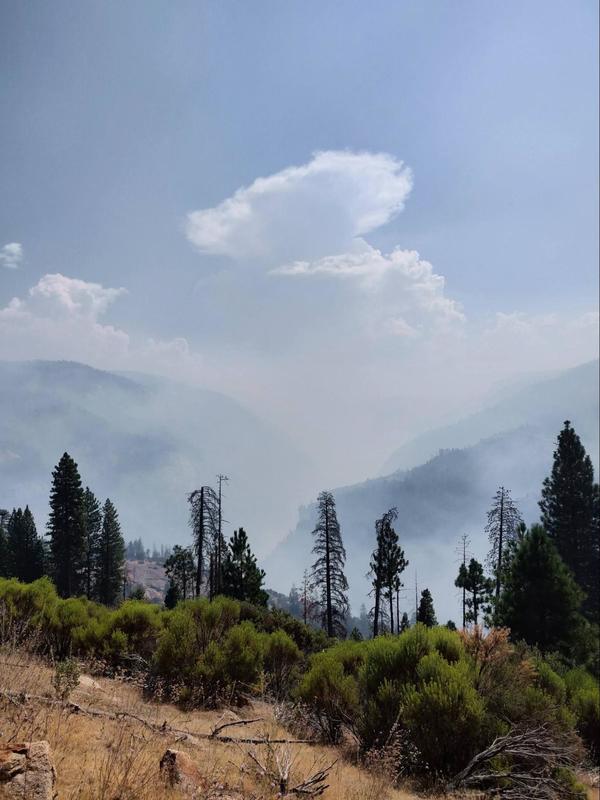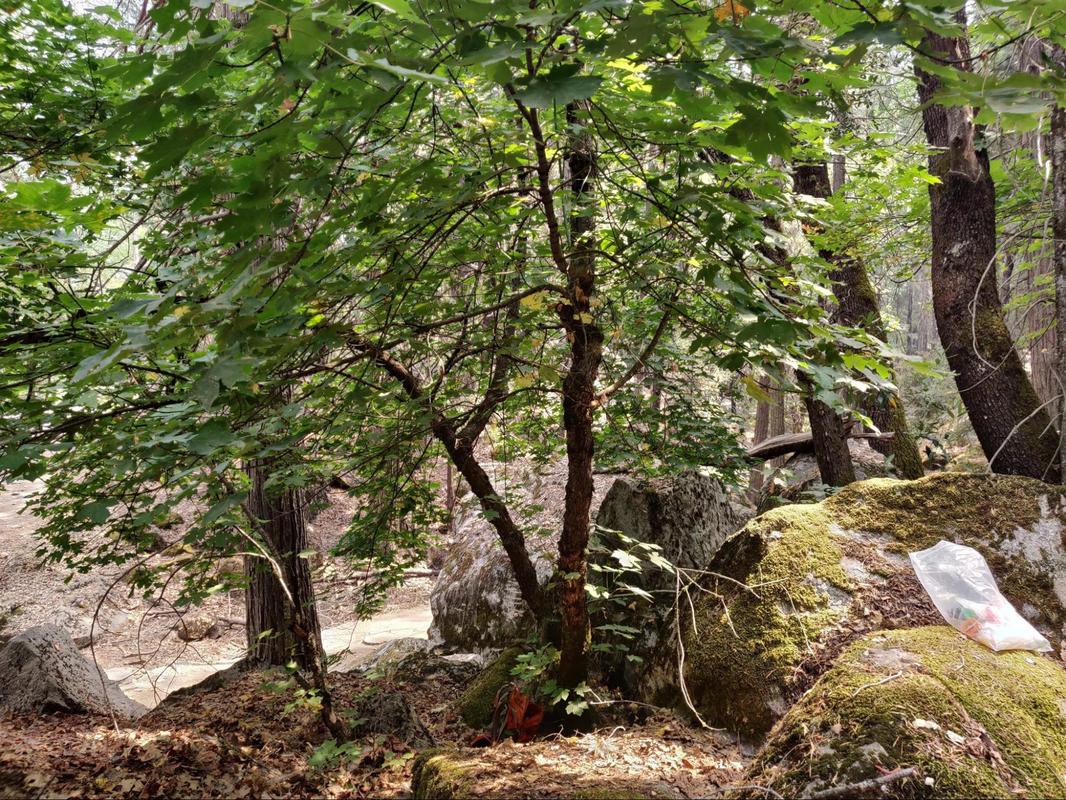 Ian Mahaffey with a bigleaf maple leaf. Photo Credit: Ian Mahaffey
Ian Mahaffey with a bigleaf maple leaf. Photo Credit: Ian Mahaffey
There’s something you should know about me before we get started: I’m kind of a map nerd. I took multiple GIS courses in college and fawn over the artistic work of James Niehues in a way more closely resembling a Justin Bieber fan than an art aficionado. So when it came to picking sample locations for the Timber Tracking Project, I approached it with just as much enthusiasm as the part where I actually got to go outside.
Each volunteer was given a zone they were responsible for, and each zone came with its own required number of samples. I was assigned Zone 51, which required 15 samples. It spanned most of Yosemite National Park, as well as portions of Stanislaus and Sierra National Forests.
I saw the task of point selection as a fun geospatial puzzle, combining the elements of habitat, accessibility, permit availability, and a minimum distance of 5 miles between samples to come up with high quality data points. Adventure Scientists provided us with two apps to aid in our point selection. Magpi+ was used to collect all of the data we needed in the field, and Gaia GPS was used to mark waypoints and to easily determine if we were on public land. Together these two apps turned my cell phone into a powerful data collection computer.
My first trip was successful, despite not gathering quite as many samples as I had hoped. I finished that trip confident that my next trip, planned for the first weekend of August, would be smooth sailing. Unfortunately, Mother Nature had other plans for the Sierra.
In California, bigleaf maple habitat usually occurs between 1000 and 6000 feet in elevation, and near rivers or in canyons. This perfectly described the terrain west of Yosemite that the Ferguson fire was consuming. When I contacted Joanna Clines, Forest Botanist for Sierra National Forest, asking where I should go to complete the project, she admitted to me that the bigleaf maple sites she had been planning on telling me about were no longer accessible due to the forest closures.
This geospatial puzzle was quickly becoming a Rubik’s cube beyond my ability.
I decided to head south of Yosemite to the east side of Highway 41. Constrained by a forecast of poor air quality and the closure of the forest west of the highway, I hoped I would be able to achieve a modest goal of two samples from that area to bring my grand total up to four.
I camped out in my car Saturday night to avoid the smoky air and woke up early Sunday morning to commence my investigation. Despite searching 10 miles of Highway 41 and over 7 miles of Forest Service roads, I left the field empty-handed, unable to find a single maple.
After returning home I began planning my last collection trip. With no signs of the maples east of Highway 41, and Yosemite Valley and Highway 140 closed, I was going to have to rely heavily on the remaining terrain along Highway 120. I found four sites along Highway 120 in addition to the two I already had. By cheating the five mile buffer, I could squeeze out two additional sites, bringing me to a total of six sites to visit.
It was going to take a miracle to reach ten high quality samples, let alone fifteen.
With this information, I was able to devise a new plan consisting of thirteen possible sites to visit over the course of a three day trip that snaked between Yosemite and the National Forests. My first three points yielded great samples, and I began feeling like I would reach fifteen samples in no time. My fourth site turned out to be unproductive, but not all hope was lost. I had downloaded each of my planning maps into Gaia GPS, and combined with Google Earth I was able to make adjustments to my search on the fly without even having to leave the field.
Over the course of that trip I covered an area of 450 square miles, bagging ten samples for a total of twelve samples contributed to the project.
In that case, I suppose you could call me a nature nerd, too.
Data collected July and August 2018 in Zone 51 for the Timber Tracking Project
I’m so glad I was able to lend a hand to Adventure Scientists in their mission of data collection and conservation. I also want to give a huge Thank You to the nearly 3,000 personnel who worked on the Ferguson Fire, as well as wildland firefighters across California and the West fighting equally dangerous and damaging fires of all sizes this summer.
For more photos from Ian’s Timber Tracking Project trips, check him out on Instagram @MrMahaff.



